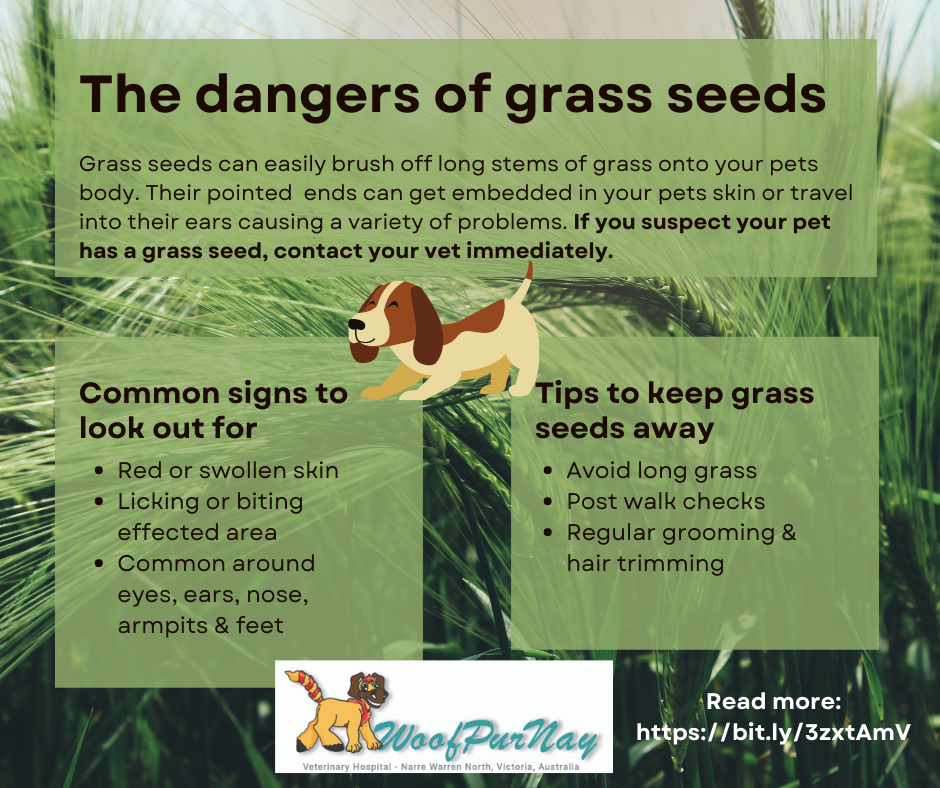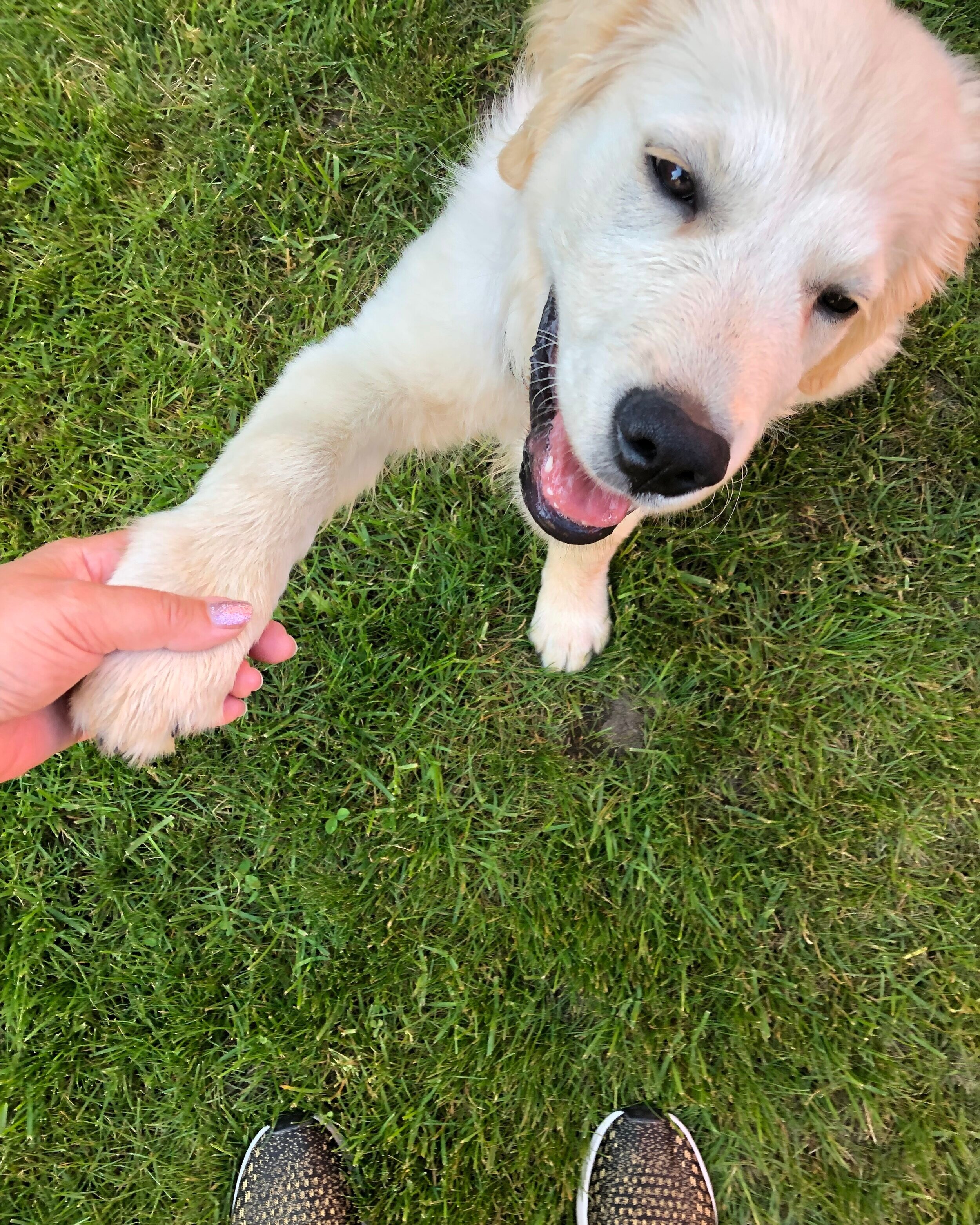Grass seeds are a common problem over spring and summer. Whilst your pet is enjoying the outdoors, grass seeds can easily brush off the tops of long grass stems and onto your pet’s body. The seeds have pointed ends so can easily get embedded in your pet’s skin or travel into your pets’ ears.
If left untreated, grass seeds can cause a variety of problems from minor irritations to conditions that require surgery. Grass seeds can also carry bacteria that can cause infection once they penetrate your pets’ skin. They can also cause severe internal damage if the seed makes its way inside your pet’s body.
What does a grass seed look like?
Grass seeds are small, typically about 1-2cm long. They are usually a dart like shape with a pointy end that can easily penetrate the skin and make it easy for gravity to push it in further. The other end is shaped like a tail making it easy for the wind to pick it up and blow it around.
What are the symptoms of a pet effected by grass seeds?
Your pet may experience different symptoms, depending on what part of your pet’s body is affected by the grass seed.
“Common signs to look for include redness or swelling on the skin and irritation such licking or rubbing the affected area. If you spot any of these symptoms, it’s important to get in touch with your local vet immediately so we can offer advice on what to do.”
Here are the symptoms & potential damage to different parts of your pets’ body:
Coat – look for loose seeds that have fallen onto the coat. The other symptom is matted hair. Potential damage is that the seed could move onto your pet’s skin and get lodged into your pets’ body.
Skin – look for symptoms of licking or biting at the area, redness or swelling. You may also notice the seed sticking out. Potential damage includes abscesses or open sores. If the seed is swallowed it could get lodged in gums, teeth, tongue or throat. If the seed penetrates the skin, it can cause significant internal tissue damage and infection that may require surgery.
Ears – look for symptoms of head shaking, head tilt, redness, rubbing or scratching their ear. Potential damage includes ear infection, loss of hearing or eardrum rupture.
Eyes – look for symptoms of redness or inflammation, eye discharge or rubbing the eye. Potential damage includes corneal ulcers, loss of eyesight or eye removal.
Paws – look for symptoms of paw licking, limping, redness or swelling. Potential damage includes severe pain from lodgement in joints, ligaments or tendons in which surgery may be required.
Nose & airways – look for symptoms of sneezing, rubbing or pawing at nose, nasal discharge or difficulty breathing. Potential damage includes severe pain, lung infection, airway blockage, pneumonia and internal tissue damage and infection that may require surgery.
Mouth & throat – look for symptoms of coughing, gagging, retching or struggling to eat or swallow. Potential damage includes inflammation of tonsils or internal tissue damage to internal organs that may require surgery.
Genitals – look for symptoms of licking around area, swelling or redness, difficulty urinating or blood in urine. Potential damage includes permanent internal or external damage that may require surgery.
How to keep grass seeds away from your pet
There are a few different ways that you can reduce the risk of grass seeds this spring.
Avoid areas with long grass – walking in areas where the grass has been cut short reduces the risk of your pet picking up a grass seed.
Regular grooming and hair trimming – grooming your pet can help identify grass seeds early and keeping long haired pets clipped, especially around their paws and ears can help prevent grass seeds getting caught in the first place.
Post walk checks – check over your pet’s body after a walk to try and find any grass seeds. Important areas to check include eyes, ears, nose, armpits and feet. Keep the symptoms listed above in mind – especially look out for areas of redness of swelling.
If you suspect that your pet may have picked up a grass seed, give us a call on 03 8784 4444 and we can offer you advice on what to do. The earlier grass seeds are caught, the less damage they can do.






